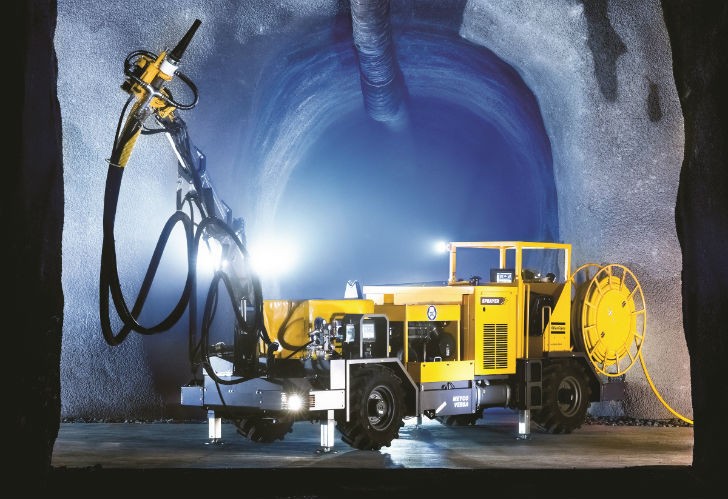Mining has traditionally been an industrial process that relies on human labor and heavy machinery. However, in recent years the industry has started leveraging new technologies that allow for more intelligent, automated, and data-driven approaches to mineral extraction. This emerging concept of “smart mining” utilizes digital solutions, automation, robotics, AI, and sensors to improve safety, productivity, and sustainability.
Remote Operations and Automation
One of the major impacts of technology on mining has been the increased use of remote and autonomous operations. Drones, robots, autonomous trucks and drillers are replacing humans in hazardous underground environments or jobs that require heavy lifting. For example, mining companies are deploying robotic drills that can operate 24/7 without safety concerns. Autonomous haulage trucks guided by GPS navigate mines without drivers. Smart Mining allows for round-the-clock operations while improving safety by reducing the number of personnel needed underground. The increased automation also improves productivity by eliminating idle time between shifts. Mining equipment manufacturers are developing driverless vehicles that cooperate autonomously to improve efficiency.
Usage of Sensors and IoT
smart mining operations increasingly rely on sensor technologies and the Internet of Things (IoT) to generate real-time insights. Sensors installed on equipment monitor critical parameters and send data wirelessly. IoT also enables condition-based monitoring to predict maintenance needs and avoid breakdowns. Wearable sensors on workers track critical vitals and locations for safety. Environmental sensors monitor air quality, methane levels, stability of excavated areas. Thermal cameras detect hotspots indicating impending equipment failures. Acoustic sensors identify anomalous sounds that could indicate geological faults or structural defects. All this sensor data is analyzed using advanced analytics for optimized decision making.
Application of Big Data and Artificial Intelligence
The proliferation of sensors and automation has generated enormous volumes of operational data from mining sites. Thisindustrial big data holds valuable insights if analyzed intelligently. Mining companies are leveraging artificial intelligence, machine learning, and predictive analytics techniques to derive actionable information from datasets. AI assistants help geologists analyze core samples and aerial/satellite imagery to better understand the deposit profile below ground. ML algorithms support autonomous trucks by recognizing other vehicles, people, and hazards. Deep learning predicts equipment maintenance needs. AI assistant ‘bots’ provide 24/7 support to remote operations centers. Advanced analytics tools help optimize extraction rates, blending, energy usage, route planning and more to improve productivity and reduce costs.
Improved Safety and Reduced Environmental Impact
An important benefit of new technologies is enhanced safety for miners. Automation eliminates the need for humans to work in hazardous underground environments or operate heavy machinery. Remote operations and teleoperation technologies allow surface control room staff to remotely manage and troubleshoot equipment from safe locations far from active working faces. Wearables and IoT-enabled safety equipment boost situational awareness. AI and predictive analytics help proactively identify and mitigate risks. Environmental monitoring using drones and sensors provides real-time data to manage issues like methane leaks, dust emissions, pond stability etc. Optimized autonomous routing and drill plans minimize waste generation. All these lead to reduced accident rates while lowering mining’s carbon footprint and overall environmental impact.
Advanced Visualization and Simulations
Geologists and engineers now have access to powerful visualization and modelling tools that support smarter decision making across the mining lifecycle – from exploration to closure. Digital twins and 3D models developed from mine data combined with geological models help visualize the underground conditions, deposit continuity and grade distribution more accurately than ever before. Simulations based on digital twins help optimize extraction sequences, test “what-if” scenarios, and minimize risks from geotechnical issues. Augmented and virtual reality provide immersive experiences of mine plans to effectively communicate with stakeholders. Advanced modelling even allows for pseudo-real time tracking of an operation’s KPIs.
Challenges on the Path to Smart Mining
While smart mining offers exciting opportunities, effective implementation also faces challenges:
– High Upfront Investment: Adopting advanced technologies requires large capital expenditure which may not give returns quickly, especially in challenging market conditions.
– Digital Skills Gap: The industry lacks sufficient talent with skills in computer vision, programming, big data analytics etc. required to develop and utilize digital solutions. Significant reskilling efforts are required.
– Reliability in Harsh Environments: Ensuring the reliability of sensors, networks and equipment in remote, rugged underground conditions with dust, vibrations remains difficult.
– Data Security and Privacy: As mining operations become more connected, securing digital systems and sensitive operational data from increasing cyber threats is a major concern.
– Integration Complexities: Smart solutions need to seamlessly connect legacy systems through open standards-based platforms to deliver true value across technology silos.
– Regulatory Uncertainty: An unclear regulatory environment with respect to issues like autonomous vehicle approvals poses uncertainties around new technology deployments.
While smart mining initiatives face hurdles, the overall industry outlook remains positive as technology reshapes mininginto a more productive, safer and sustainable sector. Early adopters who overcome integration challenges through open collaboration are best placed to stay ahead of the curve. Going forward, the successful mining organizations will be those focusing on developing talent with digital skills while building trust through responsible technology implementation and data governance. Smart technologies offer a promising pathway for mining to deliver greater value for all stakeholders in a socially and environmentally conscious manner.



